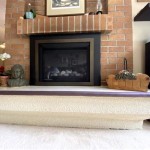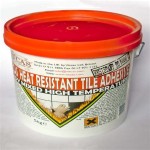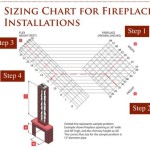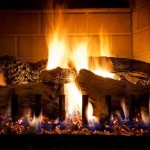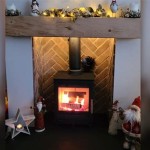Ventless Gas Log Fireplace Safety: A Comprehensive Guide
Ventless gas log fireplaces, also known as vent-free gas log fireplaces, offer an attractive and convenient alternative to traditional wood-burning fireplaces. They provide supplemental heat without the need for a chimney or venting system, making them a popular choice for homeowners looking to add ambiance and warmth to their living spaces. However, due to their unvented nature, understanding and adhering to safety precautions is paramount to ensure safe and efficient operation. This article provides an in-depth look at the safety aspects of ventless gas log fireplaces, covering installation, operation, maintenance, and potential hazards.
Unlike vented gas log fireplaces, which exhaust combustion byproducts up a chimney, ventless models release these byproducts directly into the room. These byproducts include carbon dioxide, water vapor, and small amounts of nitrogen oxides and carbon monoxide. Because of this, proper installation and adherence to safety guidelines are crucial to prevent potential health hazards associated with indoor air quality.
Proper Installation Procedures
The installation of a ventless gas log fireplace is critical for its safe and efficient operation. Incorrect installation can lead to dangerous situations, including gas leaks, carbon monoxide poisoning, and fire hazards. It is strongly recommended that a qualified professional, such as a certified gas appliance installer or licensed contractor, handle the installation process. This ensures compliance with local building codes and manufacturer instructions.
Before installation, it is imperative to verify that the fireplace and gas log set are approved for ventless use. Look for certification labels from recognized testing agencies such as the American Gas Association (AGA) or Underwriters Laboratories (UL). These certifications indicate that the appliance meets specific safety standards. Ensure that the BTU rating of the gas log set is compatible with the size of the room in which it will be installed. Overly large units can produce excessive heat and deplete oxygen levels, leading to unsafe conditions. Check and comply with the room size requirements listed in the manufacturer's installation manual.
The fireplace enclosure itself must be built to withstand the heat generated by the gas logs. Non-combustible materials, such as brick, stone, or metal, should be used for the firebox. Follow the manufacturer’s guidelines for clearance to combustible materials, such as wood framing, curtains, and furniture. Maintaining adequate clearance will prevent the risk of fire. The gas supply line should be inspected for leaks before connecting it to the gas log set. Use a gas leak detection solution or a gas leak detector to identify any potential leaks. If leaks are detected, they must be repaired by a qualified professional before proceeding with the installation.
Install a carbon monoxide detector in the room where the ventless gas log fireplace is located, as well as in adjacent rooms and sleeping areas. Carbon monoxide is a colorless, odorless gas that can be fatal. A properly functioning carbon monoxide detector will alert occupants to the presence of the gas. Ensure proper ventilation in the room. While ventless fireplaces do not require a chimney, they do require adequate ventilation to remove combustion byproducts. Open a window slightly while the fireplace is in operation, especially in smaller rooms. This helps to maintain healthy oxygen levels and prevent the buildup of carbon monoxide.
Following a professional installation, thoroughly test the gas log set to ensure it is functioning properly. Check for gas leaks around the connections and verify that the flames are burning correctly. Address any issues promptly before using the fireplace regularly.
Safe Operation and Usage Guidelines
Even with proper installation, adherence to safe operational guidelines is essential for preventing accidents and maintaining a healthy indoor environment. Ventless gas log fireplaces are designed for supplemental heating and should not be used as the primary heat source for extended periods. Prolonged use can deplete oxygen levels and increase the concentration of combustion byproducts in the room.
Never leave a ventless gas log fireplace unattended while it is in operation. Turn off the fireplace before leaving the room or going to sleep. Never use the fireplace in a confined space, such as a bedroom or bathroom, where oxygen levels can quickly become depleted. These spaces often lack adequate ventilation, increasing the risk of carbon monoxide poisoning.
Ensure that all users of the fireplace are familiar with its operation and safety features. Educate family members, guests, and caregivers on the proper use of the unit, including how to turn it on and off, and what to do in case of a gas leak or carbon monoxide alarm. Keep combustible materials away from the fireplace. Never place flammable objects, such as blankets, pillows, or clothing, near the fireplace. Maintain a safe distance to prevent the risk of fire.
Do not use the fireplace to burn paper, wood, or other materials. Ventless gas logs are designed to burn natural gas or propane only. Burning other materials can damage the fireplace and release harmful pollutants into the air. Supervise children and pets closely when the fireplace is in operation. Ensure that they do not touch the hot surfaces of the fireplace or play near the flames. Consider using a safety screen or barrier to prevent accidental contact.
If you experience any symptoms of carbon monoxide poisoning, such as headache, dizziness, nausea, or confusion, turn off the fireplace immediately and evacuate the premises. Call emergency services or a qualified medical professional for assistance. Avoid using the fireplace again until it has been inspected and repaired by a qualified technician.
Maintenance and Inspection
Regular maintenance and inspection are essential for ensuring the continued safe and efficient operation of a ventless gas log fireplace. Proper maintenance helps to prevent gas leaks, carbon monoxide buildup, and other potential hazards. A qualified professional should inspect the fireplace at least once a year. This inspection should include checking the gas connections for leaks, inspecting the burner assembly for damage or blockages, and verifying the proper functioning of the safety controls. A thorough inspection by a qualified technician can identify potential problems before they escalate into serious safety hazards.
Clean the gas logs and burner assembly regularly to remove dust, debris, and soot. Use a soft brush or vacuum cleaner to gently clean the logs and burner. A clean burner assembly ensures proper combustion and reduces the risk of carbon monoxide production. Check the oxygen depletion sensor (ODS) regularly to ensure it is functioning properly. The ODS is a critical safety device that shuts off the gas supply if oxygen levels in the room become too low. If the ODS is not working correctly, the fireplace should not be used until it is repaired or replaced.
Replace carbon monoxide detector batteries at least twice a year, or according to the manufacturer's instructions. Test the detector regularly to ensure it is functioning properly. A properly functioning carbon monoxide detector is essential for detecting the presence of this dangerous gas. Keep the area around the fireplace clear of obstructions. Ensure that there is adequate airflow around the fireplace to prevent overheating and maintain proper combustion. Do not block the air vents or openings on the fireplace.
If you notice any unusual odors, sounds, or flames, turn off the fireplace immediately and contact a qualified technician for assistance. Unusual signs can indicate a problem with the gas supply, burner assembly, or safety controls. Promptly addressing these issues can prevent potential safety hazards. Keep the instruction manual for the fireplace in a safe and accessible location. Refer to the manual for specific maintenance and troubleshooting information. The instruction manual provides valuable information on the proper care and operation of the fireplace.
By adhering to these installation, operation, and maintenance guidelines, homeowners can safely enjoy the warmth and ambiance of a ventless gas log fireplace while minimizing the risks associated with unvented combustion.

Vent Free Gas Log Safety Albany Ny Northeastern Fireplace

Are Vent Free Gas Fireplaces Safe Ventless

Vent Free Gas Log Sets A List Of Do S And Don Ts

Napoleon Gvfl30 Ventless Gas Log Set 30 Inch
:max_bytes(150000):strip_icc()/ventless-gas-fireplaces-4160746-hero-f9d4bdcd9bd446eb84406de306f790ba.jpg?strip=all)
How To Pick Out A Ventless Gas Fireplace

ᑕ❶ᑐ Ventless Gas Logs Are They Safe

A Ventless Gas Fireplace Doesn T Belong In Your Home Greenbuildingadvisor

Vented Vs Ventless Gas Logs What S The Difference

Vented Vs Ventless Gas Fireplace Logs

Real Fyre Vo8e Valley Oak Ventless Gas Log Set Ansi Certified
Related Posts

